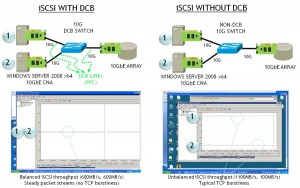“It is a mistake to think you can solve any major problems just with potatoes.”
Douglas Adams (1952-2001, English humorist, writer and dramatist)
While there have been many advances and improvements to NFS over the last decade, some IT organizations have elected to continue with NFSv3 – like potatoes, it’s the staple filesystem protocol that just about any UNIX administrator understands.
Although adequate for many purposes and a familiar and well understood protocol, choosing and continuing to deploy NFSv3 has become increasingly difficult to justify in a modern datacenter. For example, NFSv3 makes promiscuous use of ports, something that is unsuitable for a variety of security reasons for use over a wide area network (WAN); plus increased server & client bandwidth demands and improved functionality of Network Attached Storage (NAS) arrays have outstripped NFSv3’s ability to deliver high throughput.
NFSv4 and the minor versions that follow it are designed to address many of the issues that NFSv3 poses. NFSv4 also includes features intended to enable its use in global wide area networks (WANs), and to improve the performance and resilience of NAS (Network Attached Storage):
- Firewall-friendly single port operations
- Internationalization support
- Replication and migration facilities
- Mandatory use of strong RPC security flavors that depend on cryptography, with support of access control that is compatible with both UNIX ® and Windows ®
- Use of character strings instead of integers to represent user and group identifiers
- Advanced and aggressive cache management features with delegations
- (with NFSv4.1 pNFS, or parallel NFS) Trunking
In April 2003, the Network File System (NFS) version 4 Protocol was ratified as an Internet standard, described in RFC-3530, which superseded NFS Version 3 (NFSv3, specified in RFC-1813). Since the ratification of NFSv4, further advances have been made to the standard, notably NFSv4.1 (as described in RFC-5661, ratified in January 2010) that included several new features such as parallel NFS (pNFS). And further work is currently underway in the IETF for NFSv4.2.
Delegations with NFSv4
In NFSv3, clients have to function as if there is contention for the files they have opened, even though this is often not the case. As a result of this conservative approach to file locking, there are frequently many unneeded requests from the client to the server to find out whether an open file has been modified by some other client. Even worse, all write I/O in this scenario is required to be synchronous, further impacting client-side performance.
NFSv4 differs by allowing the server to delegate specific actions on a file to the client; this enables more aggressive client caching of data and the locks. A server temporarily cedes control of file updates and the locking state to a client via a delegation, and promises to notify the client if other clients are accessing the file. Once the client holds a delegation, it can perform operations on files with data has been cached locally, and thereby avoid network latency and optimize its use of I/O.
Trunking with pNFS
Many additional enhancements to NFSv4 are available with NFSv4.1, of which pNFS is a part. pNFS adds the capability to perform trunking at the NFS level by adding a session layer. The client establishes a session with an NFSv4.1 server, and can then create multiple TCP connections to the NFSv4.1 server, each potentially going over a different network interface on the client, and arriving on a different interface on the NFSv4.1 server. Now different requests sent over the same session identifier can go over different network paths, dramatically improving latency and increasing bandwidth.
Although client and server implementations of NFSv4.1 are available, they are in early stages of implementation and adoption. However, to take advantage of them in the future, it is important to plan now for the move to NFSv4 and beyond – and there are many servers and clients available now that support NFSv4. NFSv4 is a mature and stable protocol with many advantages in its own right over its predecessors NFSv3 and NFSv2.
Potatoes and Beyond
Now is the time to make the switchover; there really is no justification for not pursuing NFSv4 as the first NFS protocol version of choice. Although migrating from earlier versions of NFS requires some planning as there are significant differences between the two protocols, the benefits are impressive. To ensure a smooth migration to NFSv4 and beyond, the SNIA Ethernet Storage Forum NFS Special Interest Group has recently published an overview white paper “Migrating to NFSv4“. This covers internationalization support, automatic mounting of NFSv4 filesystems on demand, TCP protocol support amongst other considerations.
NFSv4 and NFSv4.1 have been developed for a reason; and NFSv4.2 is on the horizon. Like the potato, NFSv3 is a staple of the network Filesystem world. But as Douglas Adams said; “It is a mistake to think you can solve any major problems just with potatoes.” NFSv4 fixes many of NFSv3’s deficiencies, and represents a major advance that brings improved availability, performance and security; all the check-list items beyond potatoes that today’s users of network attached storage demand.

